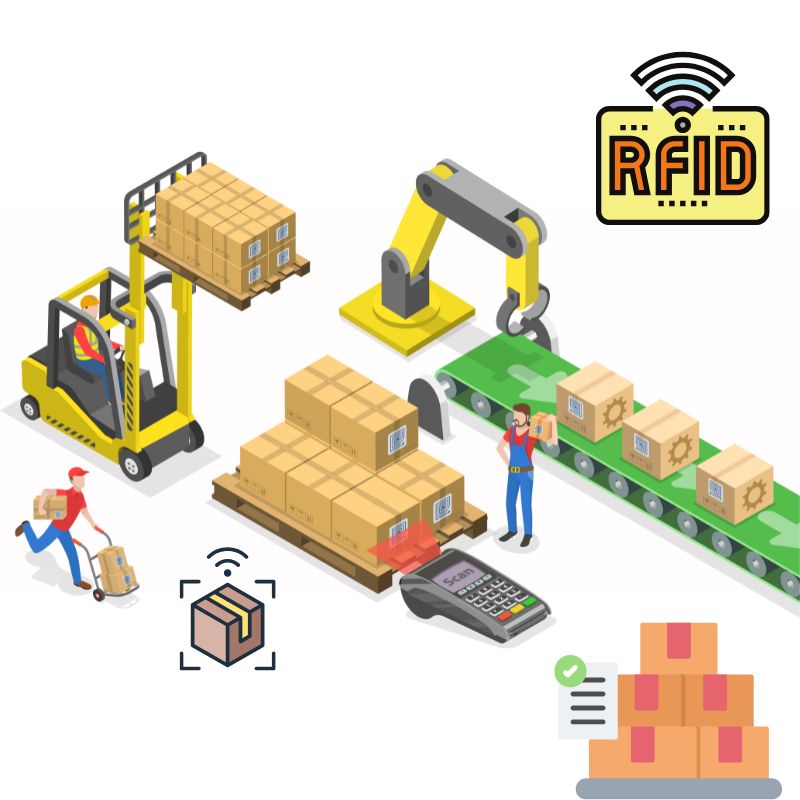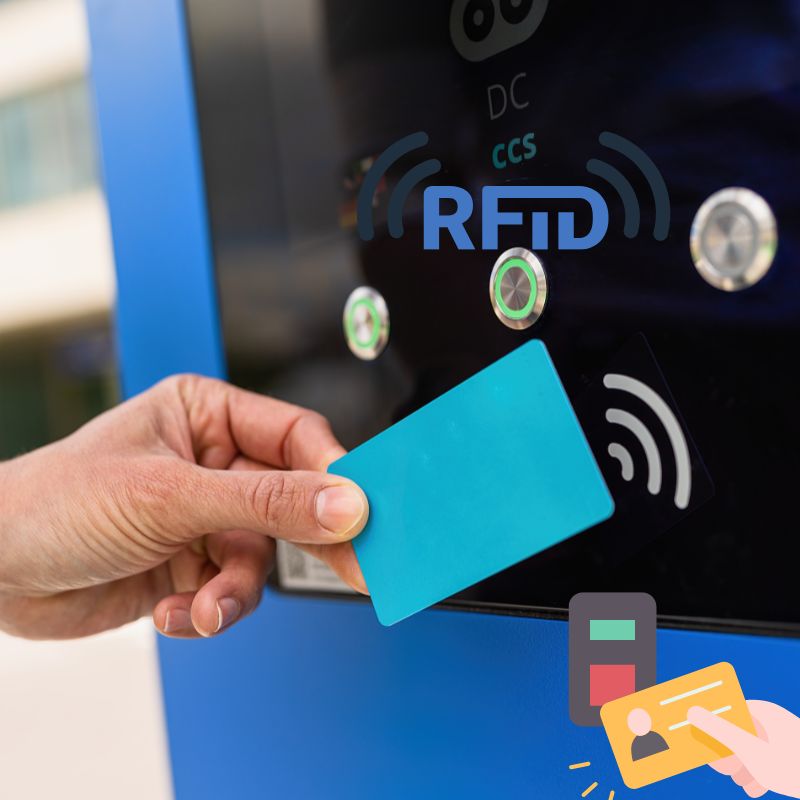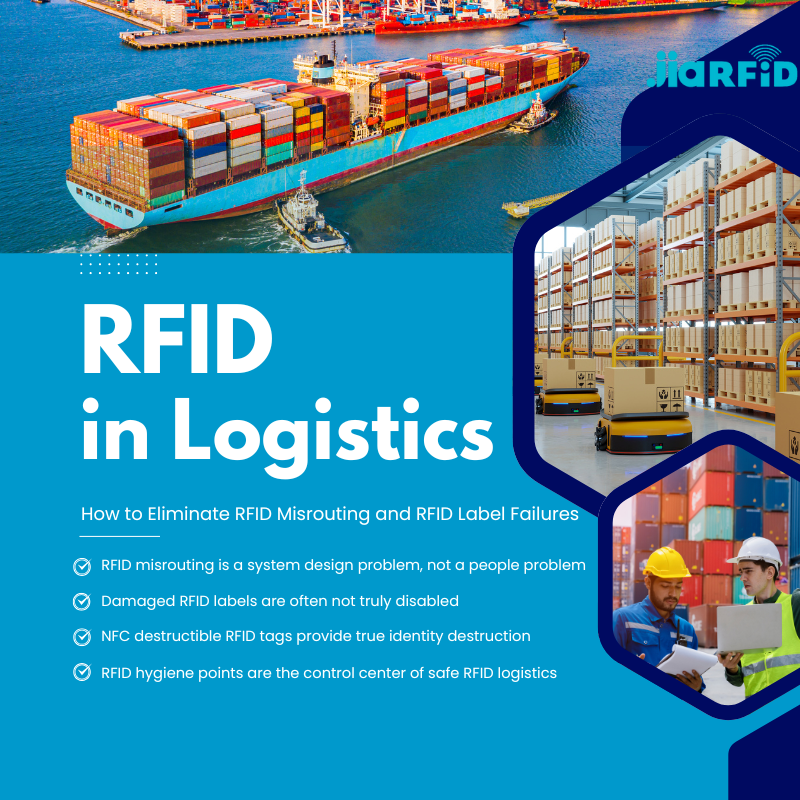
What is the Purpose of the Radio Frequency Identification?
Table of Contents
How RFID Tags Work: Understanding Radio Frequency Identification and Its Applications
RFID tags eliminate the need for a direct line of sight, making them superior to traditional barcodes in many applications. In this guide, we’ll explore how RFID tags work, the types of tags available, their uses across industries, and how they compare to other technologies.

What Is Radio Frequency Identification (RFID)?
RFID technology is a wireless technology that uses radio waves to identify and track objects. Unlike barcodes, which require a direct line of sight, RFID tags can be scanned from a distance, making them more versatile and efficient.
Key components of RFID include:
- Tags: Store data about the object.
- Readers: Retrieve and transmit data.
- Antennae: Facilitate communication between tags and readers.
“RFID technology is transforming industries by enabling faster, more accurate inventory management and asset tracking.”
How Do RFID Tags Work?
An RFID tag works by using radio waves to send information to an RFID reader, which then processes the data. The process is seamless and efficient:
- Reader Activation: The RFID reader sends a signal to the tag.
- Tag Response: The tag’s antenna receives the signal and sends back data stored in its chip.
- Data Transmission: The reader collects this data and sends it to a management system.
This interaction eliminates the need for manual scanning, reducing errors and improving efficiency.
Components of an RFID System
An RFID system comprises three essential components:
- RFID Tags: These can be either passive (no internal power source) or active (powered by a battery).
- RFID Readers: Devices that retrieve data from tags.
- RFID Software: Manages the data and integrates it into existing systems.
“RFID systems operate seamlessly to track assets and improve workflow efficiency.”
Types of RFID Tags: Passive vs. Active
Passive RFID Tags
- Powered by the reader’s signal.
- Cost-effective and widely used in inventory tracking.
- Shorter read range compared to active tags.
Active RFID Tags
- Equipped with an internal battery.
- Suitable for tracking high-value items over long distances.
- Often used in logistics and supply chain management.
“The choice between passive and active RFID tags depends on the application and range requirements.”
Understanding RFID Frequencies
RFID systems operate at different frequency ranges, each suited for specific applications:
- Low Frequency (LF): Operates at 125-134 kHz; suitable for access control and animal tagging.
- High Frequency (HF): Operates at 13.56 MHz; commonly used in contactless payment systems.
- Ultra-High Frequency (UHF): Operates at 860-960 MHz; ideal for supply chain and inventory tracking.
“Choosing the right frequency ensures optimal performance for your RFID application.”
Applications of RFID in the Supply Chain
RFID tags are invaluable in supply chain management, providing real-time visibility and control:
- Inventory Management: Automates stock counting and reduces errors.
- Shipment Tracking: Monitors goods throughout transit.
- Warehouse Efficiency: Streamlines operations like picking and packing.
“RFID technology enhances supply chain visibility, ensuring timely deliveries and accurate inventory.”
RFID vs. Barcode Technologies
While both RFID and barcodes are used for tracking, RFID offers distinct advantages:
| Feature | RFID | Barcode |
|---|---|---|
| Read Range | Up to 100 meters | A few centimeters |
| Line of Sight Needed? | No | Yes |
| Durability | Resistant to damage | Easily worn or torn |
| Data Capacity | High | Limited |
“RFID tags outperform barcodes in terms of durability, efficiency, and scalability.”
How RFID Supports Asset Tracking and Management
Asset tracking is one of the most critical uses of RFID technology.
Benefits of RFID in Asset Tracking:
- Real-Time Data: Enables businesses to monitor assets at any time.
- Improved Accuracy: Reduces human error in data entry.
- Cost Efficiency: Minimizes losses and theft.
“RFID systems offer unparalleled accuracy and efficiency for asset tracking and inventory management.”

Challenges in RFID Adoption
Despite its benefits, RFID adoption is not without challenges:
- Initial Costs: RFID tags and readers can be expensive to implement.
- Signal Interference: Metal and liquids may disrupt RFID signals.
- Data Security: Protecting sensitive information is crucial.
“Addressing these challenges is essential for maximizing the potential of RFID technology.”
Future of RFID Tags and Smart Labels
The future of RFID technology is promising, with advancements in IoT integration and AI-driven insights. Key trends include:
- Smart Labels: Combining RFID and barcode technologies for enhanced tracking.
- Eco-Friendly Tags: Developing recyclable RFID tags to promote sustainability.
- IoT Connectivity: Integrating RFID with IoT devices for smarter operations.
“RFID technology will continue to drive innovation across industries, improving efficiency and sustainability.”
FAQs
How do RFID tags work?
RFID tags use radio waves to transmit data to a reader, which processes and stores the information.
What is the difference between passive and active RFID tags?
Passive tags are powered by the reader’s signal, while active tags have an internal battery for extended range.
How is RFID used in the supply chain?
RFID tags help monitor inventory, track shipments, and streamline warehouse operations.
Why is RFID better than barcodes?
RFID does not require a direct line of sight, offers greater data capacity, and is more durable than barcodes.
What are the challenges of using RFID?
Challenges include high implementation costs, signal interference, and data security concerns.
Comments
Hot Products

RFID in Logistics: How to Eliminate RFID Misrouting and RFID Label Failures
RFID in logistics is more than just a tool to speed up processes. It has become a key part of how modern supply chains operate.

What Is RFID Waste Management
Imagine a city where every trash bin speaks — not literally — but through a tiny chip that tells the system when it’s full, when it’s emptied, and where it went. That’s what RFID waste management is doing today.

What are Bolt Seals and their Applications? | Complete Guide
In global trade and logistics, bolt seals play a crucial role in ensuring cargo security and compliance. These small but powerful devices are designed to lock shipping containers, trailers, and cargo doors with a tamper-evident mechanism.

What is an RFID Card Protector? Benefits, Use Cases, and Buying Guide
RFID technology (Radio Frequency Identification) is everywhere: in your credit cards, ID badges, transit passes, hotel room keys, and more. It offers speed and convenience, but it also opens the door to a new kind of digital theft called “skimming.” That’s where an RFID card protector comes in.

RFID Wristbands for Events: Bulk Buying Guide for Organizers
RFID wristbands for events are becoming the go-to solution for organizers who need faster entry, fraud prevention, and cashless payments at concerts, festivals, and sports venues. Unlike paper tickets or QR codes, these smart wristbands use embedded chips to streamline access, secure transactions, and improve the guest experience.

How RFID Tag on Windscreen Improves Vehicle Access Control and Toll Systems
In today’s fast-paced world, vehicle identification needs to be quick, secure, and contactless. An RFID Tag on the Windscreen provides exactly that — a reliable way to manage toll collection, parking, and gated access without stopping vehicles.
Tags
RELATED BLOGS

RFID in Logistics: How to Eliminate RFID Misrouting and RFID Label Failures
RFID in logistics is more than just a tool to speed up processes. It has become a key part of how modern supply chains operate.

What Is RFID Waste Management
Imagine a city where every trash bin speaks — not literally — but through a tiny chip that tells the system when it’s full, when it’s emptied, and where it went. That’s what RFID waste management is doing today.

What are Bolt Seals and their Applications? | Complete Guide
In global trade and logistics, bolt seals play a crucial role in ensuring cargo security and compliance. These small but powerful devices are designed to lock shipping containers, trailers, and cargo doors with a tamper-evident mechanism.




